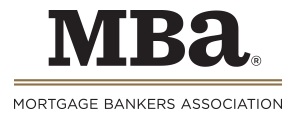WASHINGTON, D.C. – August 22, 2011 – (RealEstateRama) — The delinquency rate for mortgage loans on one-to-four-unit residential properties increased to a seasonally adjusted rate of 8.44 percent of all loans outstanding as of the end of the second quarter of 2011, an increase of 12 basis points from the first quarter of 2011, and a decrease of 141 basis points from one year ago, according to the Mortgage Bankers Association’s (MBA) National Delinquency Survey. The non-seasonally adjusted delinquency rate increased 32 basis points to 8.11 percent this quarter from 7.79 percent last quarter.
The percentage of loans on which foreclosure actions were started during the second quarter was 0.96 percent, down 12 basis points from last quarter and down 15 basis points from one year ago. The delinquency rate includes loans that are at least one payment past due but does not include loans in the process of foreclosure. The percentage of loans in the foreclosure process at the end of the second quarter was 4.43 percent, down 9 basis points from the first quarter and 14 basis points lower than one year ago. The serious delinquency rate, the percentage of loans that are 90 days or more past due or in the process of foreclosure, was 7.85 percent, a decrease of 25 basis points from last quarter, and a decrease of 126 basis points from the second quarter of last year.
The combined percentage of loans in foreclosure or at least one payment past due was 12.54 percent on a non-seasonally adjusted basis, a 23 basis point increase from last quarter, but was 143 basis points lower than a year ago.
“While overall mortgage delinquencies increased only slightly between the first and second quarters of this year, it is clear that the downward trend we saw through most of 2010 has stopped. Mortgage delinquencies are no longer improving and are now showing some signs of worsening,” said Jay Brinkmann, MBA’s Chief Economist. “The good news is the continued decline in long-term delinquencies, those mortgages that are three payments or more past due. The bad news is that drop is offset by an increase in newly delinquent loans one payment past due.”
Brinkmann continued, “Mortgage loans that are one payment, or 30 days, past due are very much driven by changes in the labor market, and the increase in these delinquencies clearly reflects the deterioration we saw in the labor market during the second quarter. Weekly first-time claims for unemployment insurance started the quarter at 385,000 but finished the quarter at 432,000. The unemployment rate started the quarter at 8.8 percent but climbed to 9.2 percent by the end of the quarter.”
“Foreclosure start rates fell to their lowest level since the fourth quarter of 2007. Foreclosure inventory rates also fell, to their lowest level since the third quarter of 2010. While some have argued that this drop in foreclosures is a temporary drop which does not reflect the problems yet to come, this does not appear to be the case, at least at the national level. There are still many problem loans that need to be resolved, but the idea that there is a growing backlog of loans being held back from foreclosure is simply not supported by these numbers. The percentage of loans 90 days or more past due continues to fall along with the foreclosure rate, and is at the lowest point since the beginning of 2009. Were there a growing backlog, we would expect to see the 90-plus day delinquent category increasing.”
“Rather than increasing, seriously delinquent loans, those either 90 days or more past due or somewhere in the foreclosure process, declined for the fourth consecutive quarter, reaching their lowest level since the first quarter of 2009. Perhaps most importantly, the vast majority of these distressed loans were originated before 2008. While loans originated between 2005 and 2007 accounted for only 30 percent of the loans, they accounted for 65 percent of the seriously delinquent loans. As we work through these problem loans, particularly those originated at the peak of the home price bubble in California, Florida and elsewhere, the foreclosure problem will ease because more recent loans are showing much better performance.”
“Looking across states, foreclosures continued to be highly concentrated in just a few states, with five states accounting for 52 percent of the foreclosure inventory in the second quarter. The single biggest factor determining whether or not a state has a large backlog of foreclosures is whether the state has a judicial foreclosure system, meaning whether or not a foreclosure needs to go through the courts. Of the 9 states whose percentage of loans in foreclosure is higher than the national average, only one, Nevada, does not have a judicial system of foreclosure.”
“One of the reasons the percentage of loans in foreclosure in California (3.6 percent) is considerably lower than states like Florida (14.4 percent), New Jersey (8.0 percent), Illinois (7.0 percent) and New York (5.5 percent) is that California does not have a judicial foreclosure system. Therefore, as we work toward resolving the foreclosure overhang in the housing market, we should be careful to distinguish between the economic impediments to resolution and the legal impediments to resolution,” Brinkmann said.
“Some states, with Maryland as the prime example, remain burdened with elevated 90+ delinquent rates, likely due to specific government actions intended to slow foreclosure initiations in recent quarters.”
Change from last quarter (first quarter of 2011)
On a seasonally adjusted basis, the overall delinquency rate increased for all loan types. The seasonally adjusted delinquency rate increased 15 basis points to 4.74 percent for prime fixed loans and increased 51 basis points to 11.76 percent for prime ARM loans. For subprime loans, the delinquency rate increased 58 basis points to 22.62 percent for subprime fixed loans and increased 87 basis points to 27.18 percent for subprime ARM loans. FHA and VA loans also saw increases, with the delinquency rate increasing 59 basis points to 12.62 percent for FHA loans and increasing 12 basis points to 7.05 percent for VA loans.
The percent of loans in foreclosure, also known as the foreclosure inventory rate, decreased nine basis points overall to 4.43 percent. The foreclosure inventory rate for prime fixed loans decreased three basis points to 2.56 percent. The rate for prime ARM loans decreased 37 basis points from last quarter to 9.16 percent. The rate for subprime ARM loans decreased three basis points to 22.23 percent and the rate for VA loans decreased nine basis points to 2.30 percent. The rate for FHA loans decreased 11 basis points to 3.24 percent. Subprime fixed loans saw an increase of 48 basis points to 11.01 percent, which sets a record high in the survey for three straight quarters.
The non-seasonally adjusted foreclosure starts rate decreased six basis points for prime fixed loans to 0.62 percent, 14 basis points for prime ARM loans to 1.82 percent, 12 basis points for subprime fixed to 2.44 percent and five basis points for subprime ARMs to 3.62 percent. The foreclosure starts rate decreased 20 basis points for FHA loans to 0.73 percent and 18 basis points for VA loans to 0.55 percent.
Change from last year (second quarter of 2010)
Given the challenges in interpreting the true seasonal effects in these data when comparing quarter to quarter changes, it is important to highlight the year over year changes of the non-seasonally adjusted results.
Compared with the second quarter of 2010, the foreclosure inventory rate increased 20 basis points for prime fixed loans and increased 211 basis points for subprime fixed loans, while the foreclosure inventory rate decreased 100 basis points for prime ARM loans, 76 basis points for subprime ARM loans, 38 basis points for FHA loans, and 20 basis points for VA loans.
Over the past year, the non-seasonally adjusted foreclosure starts rate decreased nine basis points for prime fixed loans, 14 basis points for prime ARM loans, 29 basis points for FHA loans and 15 basis points for VA loans. The foreclosure starts rate increased 14 basis points for subprime fixed loans and increased 23 basis points for subprime ARM loans.
If you are not a member of the media and would like to purchase the survey, please e-mail .
© 2011 Mortgage Bankers Association (MBA). All rights reserved, except as explicitly granted.
Data are from a proprietary paid subscription service of MBA and are provided to the media as a courtesy, solely for use as background reference. No part of the data may be reproduced, stored in a retrieval system, transmitted or redistributed in any form or by any means, including electronic, mechanical, photocopying, recording or otherwise. Permission is granted to news media to reproduce limited data in text articles. Data may not be reproduced in tabular or graphical form without MBA’s prior written consent.
###
The above data were obtained in cooperation with the Mortgage Bankers Association (MBA), which produces the National Delinquency Survey (NDS). The NDS, which has been conducted since 1953, covers 43.9 million loans on one- to four- unit residential properties, representing approximately 88 percent of all “first-lien†residential mortgage loans outstanding in the United States. This quarter’s loan count saw an increase of about 156,000 loans from the previous quarter, and decreased by 624,000 loans from one year ago. Loans surveyed were reported by approximately 120 lenders, including mortgage bankers, commercial banks, and thrifts.
###
The Mortgage Bankers Association (MBA) is the national association representing the real estate finance industry, an industry that employs more than 280,000 people in virtually every community in the country. Headquartered in Washington, D.C., the association works to ensure the continued strength of the nation’s residential and commercial real estate markets; to expand homeownership and extend access to affordable housing to all Americans. MBA promotes fair and ethical lending practices and fosters professional excellence among real estate finance employees through a wide range of educational programs and a variety of publications. Its membership of over 2,200 companies includes all elements of real estate finance: mortgage companies, mortgage brokers, commercial banks, thrifts, Wall Street conduits, life insurance companies and others in the mortgage lending field. For additional information, visit MBA’s Web site: www.mortgagebankers.org.













